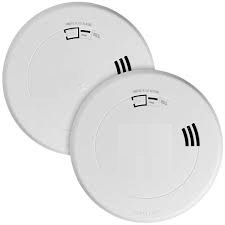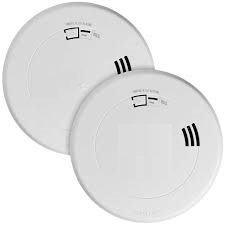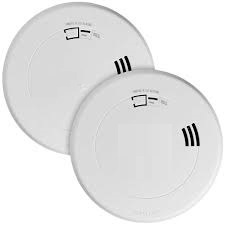STATEMENT OF BASIS AND PURPOSE OF RULE
Local Law 157 of 2016 amended the New York City Housing Maintenance Code and the New York City Building Code to require the installation of natural gas detecting devices in residential buildings. It required the Department to promulgate a rule regarding the installation and location of natural gas alarms after an industry standard had been established.
National Fire Protection Association (“NFPA”) standard 715 went into effect April 9,2022. Section 908-02 of this rule clarifies the installation and location requirements of the standard. Section 3616-06 amends some provisions of NFPA 715 to refer to compliance with the Administrative Code and the Electrical Code and to add a cut-off date for existing buildings.
In addition, section 20-01 relating to witnessing tests of gas piping systems and section 20-02 relating to high pressure steam piping systems are repealed, as the requirements of those sections are now covered by Chapter 4 of the Fuel Gas Code and Chapter 12 of the Mechanical Code, respectively.
In response to comments received, language was added to address a space that does not allow for installation of an alarm at least 3 feet from a fuel-gas-burning appliance. Also, the list of people who can install alarms powered by batteries or by plugging in was expanded to allow someone other than a building owner, maintenance personnel or tenant to install those kinds of alarms.
In addition, the effective date of January 1, 2024 was deleted because it is no longer necessary in order to trigger the requirement to install these alarms in May of 2025.
The Department of Buildings’ authority for these rules is found in sections 643 and 1043 of the New York City Charter.
New material is underlined.
Section 1. Sections 20-01 and 20-02 of Title 1 of the Rules of the City of New York relating to relating to witnessing tests of gas piping systems and high pressure steam piping systems are REPEALED.
§2. Chapter 900 of Title 1 of the Rules of the City of New York is amended by adding a new Section 908-02 to read as follows:
$908-02 Standards for Installation and Location of Natural Gas Alarms.
fa) Adoption of National Standard. In accordance with Local Law 157 of 2016. the Department of Buildings adopts the 2023 edition of National Fire Protection Association (“NFPA“) 715 Standard for the installation of Fuel Gases Detection and Warning Equipment as it pertains to the installation and location of natural Gas alarms.
(a) Installer qualifications. Natural Gas alarms must be installed by a New York City Licensed electrical contractor, who obtains all required permits.
Exception. Natural aas alarms that are powered either by battery or by plug-in AC receptacle may be Installed bv other than a licensed electrical contractor, including but not limited to the building owner, building maintenance personnel, or the dwelling unit occupant.
§3. Chapter 3600 of Title 1 of the Rules of the City of New York is amended by adding a new section 3616-06 relating to the installation of fuel gases detection and warning equipment to read as follows:
63616-06 National Fire Protection Association (“NFPA”) 715 amendment relating to the installation and location of natural aas alarms.
Pursuant to Section 28-103.19 of the New York City Administrative Code. NFPA 715 (2023 edition) is hereby amended as follows:
4.14.1 and 4.14.1.1 through 4.14.1.5 Delete and replace with the following: Approval and Acceptance. The design and installation of natural Gas detecting systems and components must be subject to the applicable permit requirements established in the Administrative Code and the New York Citv Electrical Code.
9.5.1.2 Delete and replace with the following: Electrically powered fuel gas warning equipment must be provided with a primary ac power source in accordance with 9.5.2.1 and a secondary power source in accordance with 9.5.4. Unless otherwise permitted by the following:
(1) Detectors must be permitted to be powered by a monitored dc circuit of a control unit where power for the control unit meets the requirements of Section 9.5 and the circuit remains operable upon loss of primary ac power.
(2) A detector and a wireless transmitter that serves only that detector must be permitted to be powered from a monitored battery primary source where part of a listed, monitored, low-power radio wireless system.
(3) A monitored battery primary power source in accordance with 9.5.3 must be permitted in existing buildings, as defined in section 28-101.5 of the Administrative Code, that were constructed before January 1.2024.
(b) Installation required. Natural gas alarms must be installed in private dwellings, class A multiple dwellings and class B multiple dwellings as defined in the Housing Maintenance Code, in accordance with the requirements of this section and local law 157 of 2016.
Exception: The requirements of this section do not apply to buildings that do not have aas piping or gas service.
fcl Private dwellings. One or more natural gas alarms must be installed in each dwelling in accordance with this section on or before May 1. 2025.
(d) Class A multiple dwellings. One or more natural gas alarms must be installed in each dwelling in accordance with this section on or before May 1. 2025.
(e) Class B multiple dwellings. On or before May 1. 2025. class B multiple dwellings must be protected bv either:
(1) One or more natural Gas alarms installed in each dwelling in accordance with this section: or
(2) A line-operated zoned natural Gas detecting system, designed in accordance with NFPA 715-2023 bv a registered design professional, and installed in all public corridors and public spaces.
£Q Requirements. Each single- or multiple-station alarm, as defined in NFPA 715. must
meet all of the following requirements:
£1} The alarm must be manufactured in accordance with NFPA 715-2023. Standard
for the Installation of Fuel Gases Detection and Warning Eguioment:
(2) Where a fuel-aas-bumina appliance is installed within a dwelling, the gas alarm must be installed in the same room as the appliance. The alarm must be located at least 3 feet, but not more than 10 feet from the appliance, measured horizontally. The oas alarm must be installed on either the ceiling, or a wall. Where installed on a wall, the alarm must be located not more than 12 inches from the ceiling.
Exception: Where the existing space does not allow for installation at least 3 feet from a fuel-gas-burning appliance, or the manufacturer's instructions or NFPA 715-2023 reouire installation in a different location, alarm installations must be placed in accordance with the manufacturers or the NFPA 715 location requirements.
(3) The alarm must be labeled with the name of the manufacturer
(4) The alarm must be listed and labeled with either UL 1484 or UL 2075. as applicable: and
(5) The alarm must be kept in good working order.




DISCLAIMER to comply with the New York City Consumer Protection Law which applies to all businesses operating in New York City: We are small family-owned and family-operated Brooklyn-based business. We are not a City of New York store nor are the website, products or services affiliated with the City of New York or any agency of the City of New York. We ourselves, our business, websites, products, services, or any hyperlinks from its website are not sponsored by, approved by, affiliated with, endorsed by, or connected to the City of New York or any agency of the City of New York, including but not limited to HPD, DOB, DOT, DSNY, FDNY and federal directly or by implication.
DISCLAIMER These codes may not be the most recent version. The State / federal or other regulation department may have more current or accurate information. We make no warranties or guarantees about the accuracy, completeness, or adequacy of the information contained on this site or the information linked to on the state site. Please check official sources.
The requirements for detector are determined by intended use and by applicable regulation. The BUYER is responsible for determining the appropriate detector needed. WE makes no warranty or representation of suitability of a detector to any code or for any specific application. IT IS THE CUSTOMER'S RESPONSIBILITY TO ENSURE THAT THE DETECTORS THE CUSTOMER ORDERS ARE IN COMPLIANCE WITH ALL STATE, FEDERAL, LOCAL, AND MUNICIPAL LAWS. Please review terms and conditions prior to purchase.
For more information about what is required, see the laws that are referenced and the rules applicable to your city and state. This page is for informational purposes only and is not intended as legal advice, professional advice or a statement of law. You may wish to consult with an attorney.
